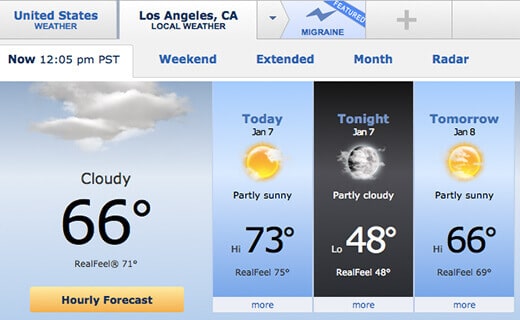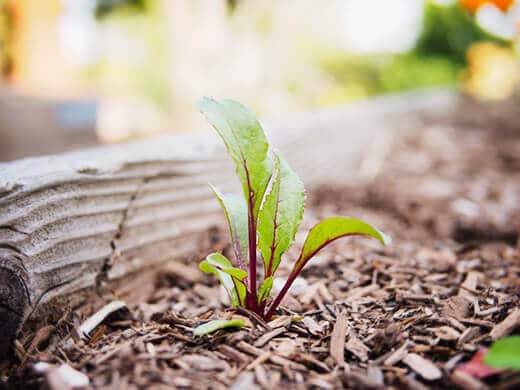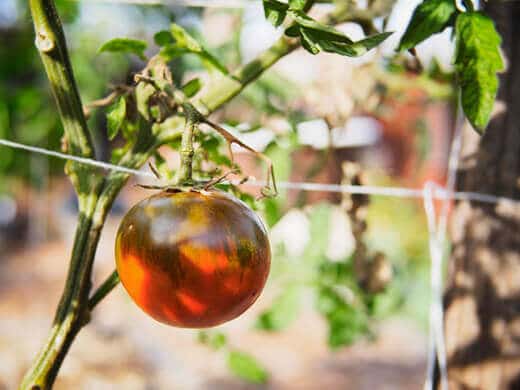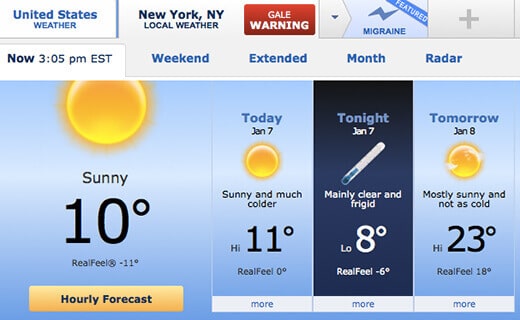When it comes to winter weather, most Southern Californians tend to be smug as they scroll through their Facebook feeds full of friends complaining about cold, rain and snow, while the west coast is boasting warmth, sun and surf.

In fact, it’s happening right now. I spent the warmest Christmas I’ve ever had in NorCal, where afternoons were a sunny 65°F, and six hours south in my SoCal neighborhood, the mercury rose to 85°F — on Christmas Day, and all week until New Year’s Day. It was warm — too warm, as even our summers only average in the 70s.
My house sitter could barely keep up with the watering as the garden was dry, dry, dry. What’s typically a once-a-week watering schedule in winter turned into an almost-daily task. Our last rains came in early December, at the same time a cold spell lingered for two weeks and brought us below-normal temps. At the end of that period, we went from 55°F to 85°F and have been enjoying our second summer ever since.
On the flip side, I’m hearing from friends in New York shivering in 5°F highs — never have I heard of such a thing, and I used to live in New York. (And let’s not get into the polar vortex craziness going on in the midwest, where I can’t even fathom negative double-digit highs… i.e., RealFeel® Freezing my cojones off.)
Instead of basking on the beach like many Angelenos, I’m worrying about the unnatural state of my garden. My beets are stunted. My broccoli is bolting. My cabbage is inundated with aphids. My fig tree, which just barely shed its leaves for winter last week, is already starting to bud. My apple tree, which normally doesn’t wake up for another couple months, is thinking spring has arrived extra early.

I’m tempted to start sowing my springtime seeds, but the uncertainty of this weather makes me think we’ll have a freeze in March.
To gardeners, farmers, and even skiers, climate change isn’t new news. We’re lamenting the lack of precip in winter and celebrating the abnormal shifts in temperature that, while bad news to seasonally traditional crops, does mean vine-ripened tomatoes in the middle of January.

I shouldn’t be surprised by any of this, as the same thing happened last year. My winter garden almost never was, and my summer crops suffered from cooler weather that welcomed slugs and powdery mildew. It makes me wonder if I need to change my gardening habits in stride with what I call global weirding — the extreme, alternating hot and cold periods that particuarly take their toll on blossoms and fruits.
In 2012, the USDA finally updated its Plant Hardiness Zone Map since the last revision in 1990. The new map shows many areas a full zone warmer, which means their low temperatures are 10 degrees warmer than in 1990.
Despite the northern states now being able to grow some warm-season plants, climate change is not a good thing for gardeners. In California, if the current weather pattern continues, we could be entering our third year of serious drought. No rain means no snow. No snow means no rivers and lakes. No rivers and lakes means no irrigation for land in the Central Valley, where a majority of the country’s vegetables, fruits, and nuts are farmed. I may be bummed about my lettuce not thriving right now, but the bigger picture is what’s most troubling.
Meanwhile, stay warm and stay safe, east coast (and midwest) friends. (And send us some of your snow, please. We snow farmers need that, too.)
















Tracy Graves liked this on Facebook.
To gardeners and farmers, climate change isn’t new news. Global Weirding in the Garden http://t.co/Yb8fmdVhJq < TY for RT! @iamgreenbean
RT @theGardenBetty: To gardeners, farmers, and even skiers, climate change isn’t new news. Global Weirding in the Garden http://t.co/Yb8fmd…
To gardeners, farmers, and even skiers, climate change isn’t new news. Global Weirding in the Garden http://t.co/Yb8fmdVhJq #gardenchat
Great blog! I live in San Pedro, probably not too far from you! Love your pug dogs too – they are too sweet. Mostly I garden for the birds, bees and butterflies. I grow a few tomatoes and have some low chill apple trees, but I prefer to concentrate on wildlife. The goldfinches love our cosmos and there’s plenty of borage for the bees. I’ve got a salvia for the hummers and asclepsias (sp?) for butterflies. Great blog. Look forward to reading daily. Are we spoiled or what? Both my hubby and I wish we would get some rain. This low humidity is inclined to make us both cranky! 🙂
Hi! We’re practically neighbors! I also grow cosmos and borage (among many other beneficial plants) but most of the birds around here are fond of my banana blossoms and feijoa blossoms. They love all the fruit trees. In the spring, I’m always awakened in the middle of the night by all the starlings in the yard. When I’m lucky, I’ll spot a hummer.
Cold frames!
I am from Vienna, Austria. In Middle Europe we have winters with temperatures around -10 to -20°C. This year it is very warm, we have temperatures around 10°C. On my little balcony garden plants are going crazy. Blueberry bushes are starting to bud!
Whoa, that is a drastic change in temperature! No wonder your blueberries are confused! I suppose ski season is off this winter, too… I’ve had friends traveling in the Alps these last few weeks and they said there’s hardly any snow.
We just received our first deep freeze in awhile here in greater Houston. I was shocked at some of the damage that plants that will tolerate 25* just did NOT tolerate below 20* for several hours. It is very upsetting since we dance on the zone of tropical tolerance (9A).
A deep freeze in 9a?! Bizarre.
I am in northern San Diego County and was noticing the same thing. My garden is so confused… And my water bill is way higher than it should be. I have tomatoes too, my greens are all bolting quickly, I have aphids EVERYWHERE, and my fig and peach trees haven’t even dropped their leaves yet! I am really hoping for some rain soon, but it doesn’t look like it is coming for awhile. It worries me…
We just pruned our fig despite signs of early budding, and are crossing our fingers it will have a good summer. Our mulberry tree, which is usually bare by now, still has most of its leaves as well.